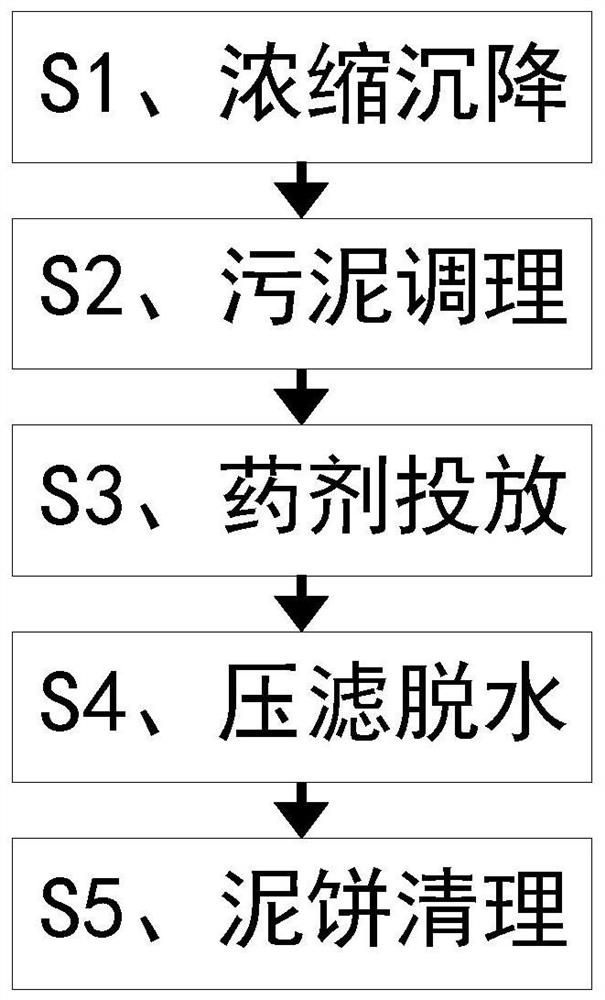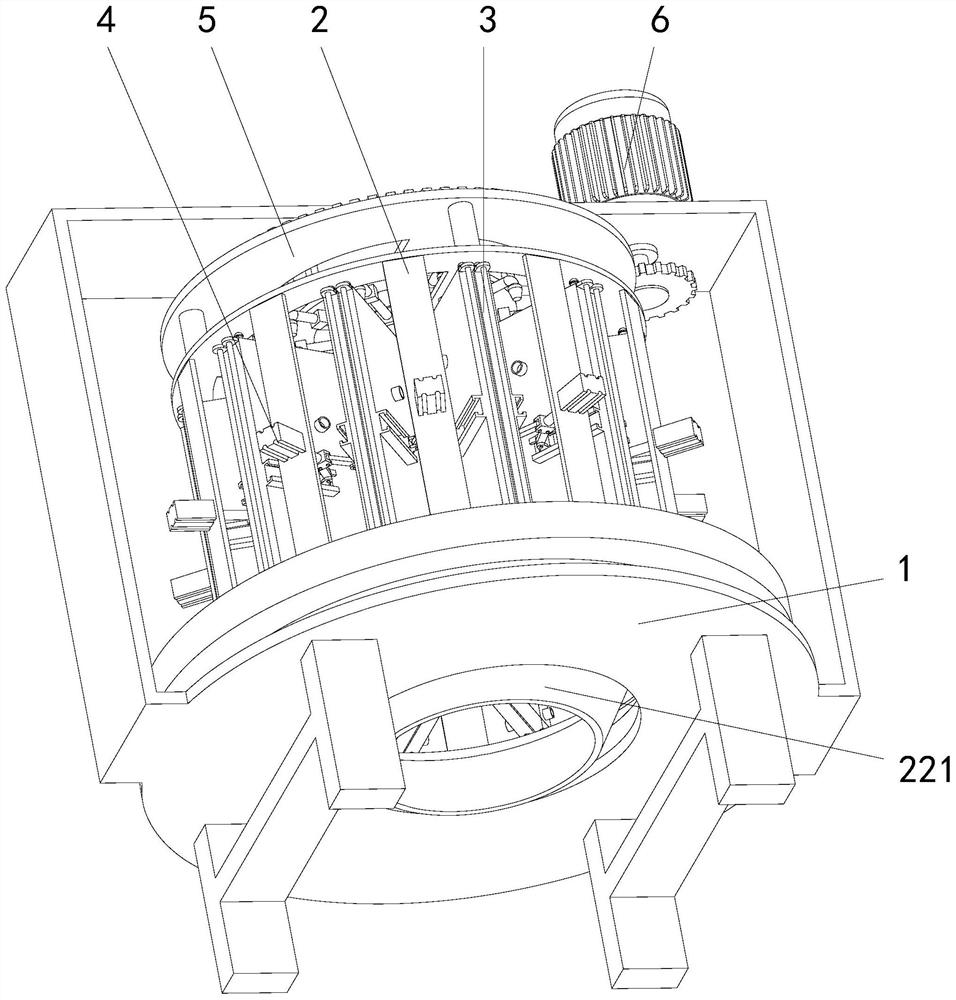A kind of sludge dewatering treatment process using biological flocculant
A biological flocculant and treatment process technology, applied in water/sludge/sewage treatment, sludge treatment, chemical instruments and methods, etc., can solve the problem of reducing the overall processing efficiency of sludge dehydration and occupying a large dehydration workshop site Space, the structure of the filtering mechanism is not compact enough, etc., to improve the flocculation effect and dehydration efficiency, shorten the stirring time, and promote the effect of contact mixing
- Summary
- Abstract
- Description
- Claims
- Application Information
AI Technical Summary
Problems solved by technology
Method used
Image
Examples
Embodiment Construction
[0047] The specific embodiment of the present invention will be described in further detail by describing the embodiments below with reference to the accompanying drawings, the purpose is to help those skilled in the art to have a more complete, accurate and in-depth understanding of the concept and technical solutions of the present invention, and To facilitate its practice, but not as a limitation of the invention.
[0048] See attached Figure 1-12 As shown, a sludge dewatering treatment process using biological flocculants, the treatment process specifically includes the following steps:
[0049] S1. Concentration and settlement: inject the sewage to be treated into the concentration and sedimentation tank for concentration and settlement;
[0050] S2. Sludge conditioning: the sludge water after concentration and settlement is further injected into the conditioning tank for conditioning;
[0051] S3. Dosing of chemicals: put the bioflocculant into the conditioning tank, ...
PUM
 Login to View More
Login to View More Abstract
Description
Claims
Application Information
 Login to View More
Login to View More - R&D
- Intellectual Property
- Life Sciences
- Materials
- Tech Scout
- Unparalleled Data Quality
- Higher Quality Content
- 60% Fewer Hallucinations
Browse by: Latest US Patents, China's latest patents, Technical Efficacy Thesaurus, Application Domain, Technology Topic, Popular Technical Reports.
© 2025 PatSnap. All rights reserved.Legal|Privacy policy|Modern Slavery Act Transparency Statement|Sitemap|About US| Contact US: help@patsnap.com



